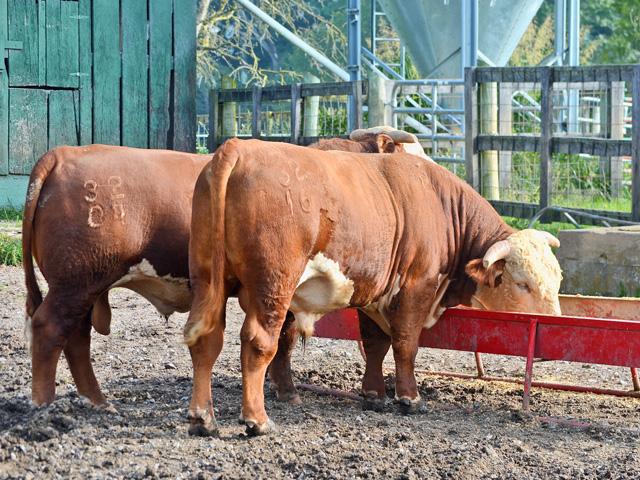Ask the Vet
Multi-Sire Breeding Programs
READER QUESTION:
We live on flatlands with lots of trees, brush and swampy areas in Manitoba. Is there any research that shows whether it's preferable to keep one bull with 30 cows per pasture or have six bulls in with the 180-head cow herd.
DR. MCMILLAN'S ANSWER:
This is a great question. I know of no research that specifically looks at the economics of these two different approaches.
P[L1] D[0x0] M[300x250] OOP[F] ADUNIT[] T[]
There are advantages to a multi-sire breeding program. First in my mind is the fact that any bull can "go bad" at any time. This may not be obvious when it happens, and he may still be breeding cows. Additionally, if several cows come into heat at one time, multiple bulls should be more effective at servicing and settling them. There is also less need for fencing and working facilities with the multi-sire approach. Larger pastures can be used, or you can rotate through several pastures as forage availability dictates. The multi-sire program is one of my favorite management practices.
Like every good thing, there are some possible drawbacks to consider too. High on the list, injury to bulls, and even cows, increases when there are multiple bulls in the herd. You also don't know the sire of a calf without DNA testing. And if the "boss" bull is infertile, he may beat back fertile bulls, preventing cows from getting pregnant.
I found one study that looked at multi-sire breeding programs in several large herds. Those researchers found that, on average, bulls sired 15 to 20 calves per breeding season; however, some bulls sired in excess of 50 calves. And 7.3% of bulls in the program sired no calves. In at least half of the breeding seasons, at least one bull was removed due to injury or poor condition.
All of this tells me that highly prolific bulls will have a disproportional impact on genetic trends in the herd. Are these bulls the genetically superior bulls? Do we want those prolific bulls to determine the direction of the herd?
**
Editor's Note:
Please contact your veterinarian with questions pertaining to the health of your herd or other animals. Every operation is unique, and the information in this column does not pertain to all situations. This is not intended as medical advice but is purely for informational purposes.
Write Dr. Ken McMillan at Ask the Vet, 2204 Lakeshore Dr., Suite 415, Birmingham, AL 35209, or email vet@progressivefarmer.com.
(c) Copyright 2022 DTN, LLC. All rights reserved.






